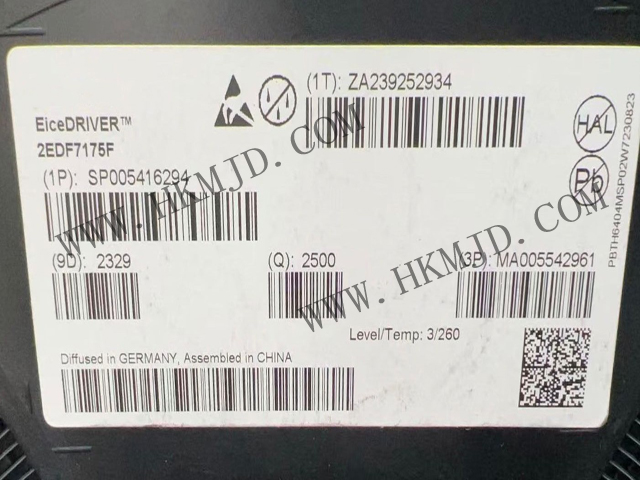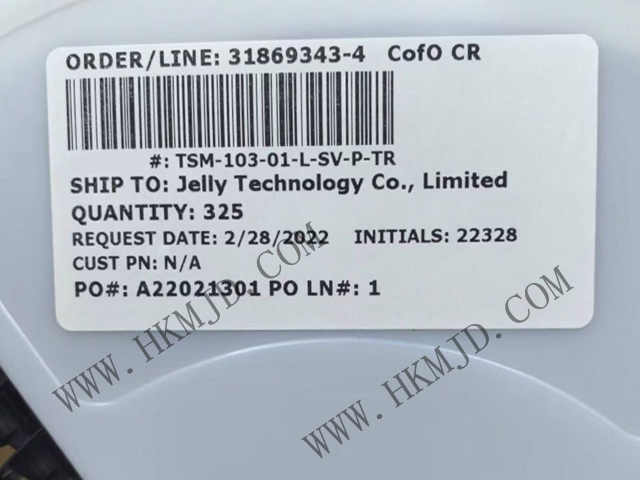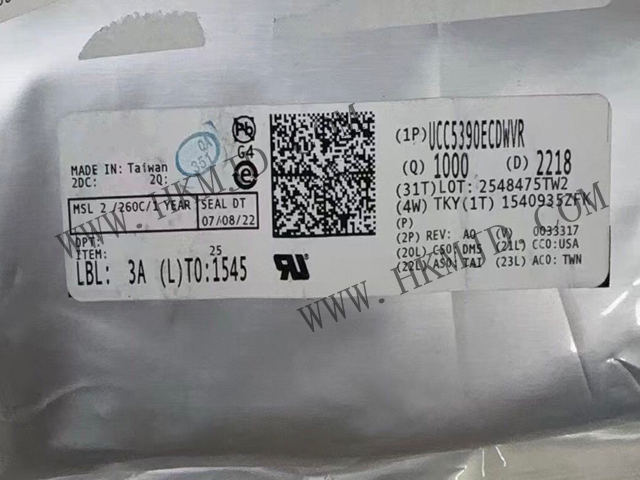Welcome Here Shenzhen Mingjiada Electronics Co., Ltd.

sales@hkmjd.com

sales@hkmjd.com

Service Telephone:86-755-83294757
 Latest Information
Latest Information Home
/Industry Information
/
Home
/Industry Information
/
xMemory Redefines MCU Storage, ST's Stellar Series Enables New SDV Future
Software Defined Vehicles (SDV) are reshaping the automotive industry, driven by the wave of automotive ‘New Four’, which uses software to lead the definition and iteration of vehicle functions, promoting the transformation of automobiles from tradi…
Software Defined Vehicles (SDV) are reshaping the automotive industry, driven by the wave of automotive ‘New Four’, which uses software to lead the definition and iteration of vehicle functions, promoting the transformation of automobiles from traditional mechanical products to intelligent terminals. However, SDV also brings many challenges: software complexity is growing exponentially, and storage configurations need to be flexibly adjusted to fit diverse functional scenarios; continuous upgrades and iterations make it increasingly difficult for developers.
To address these challenges and create a simpler and more scalable computing platform for SDVs, STMicroelectronics has launched the Stellar automotive-grade microcontrollers (MCUs) with built-in xMemory, a new generation of dynamically adjustable memory configurations built into the Stellar family of automotive MCUs, which offers automotive OEMs a scalable solution with nearly unlimited memory granularity. xMemory is the next-generation of dynamically adjustable memory configurations built into the Stellar family of automotive MCUs, and is the first of its kind in the market. xMemory is a new generation of dynamically adjustable memory configurations built into the Stellar family of automotive MCUs, providing automotive OEMs with a scalable solution with nearly unlimited memory granularity.
DAVIDE SANTO, Senior Director of the Automotive MCU Business Unit and member of the Business Unit Strategy Office at STMicroelectronics, said that SDVs enable automobiles to be regularly updated with new features, significantly extending their lifespan. In the process, the automotive industry needs to further safeguard vehicle safety while integrating richer functionality at a lower cost. With xMemory, ST's Stellar automotive-grade MCUs enable greater functional scalability at the same cost and physical constraints.

SDV's share of total vehicle production continues to rise
Following electrification and intelligence, SDV is the third core trend in the automotive industry, enabling flexible function definition through hardware and software decoupling, upgrading traditional distributed architectures to centralised domain control architectures, and reducing dependence on hardware iteration. According to Morgan Stanley's research data, SDV's share of total automotive production is expected to jump from 3.4% in 2021 to 90% in 2029, and will drive $15 billion in new semiconductor spending over the next few years.
SDV makes OTA (over-the-air download technology) a standard feature in automobiles, which supports independent updates to software modules and significantly reduces the complexity of upgrades. OTA not only fixes software bugs, adds new features, and extends vehicle lifecycles, but also improves user stickiness. This change has also led to a shift in the automotive sales model, with car companies shifting from ‘one-time hardware sales’ to ‘software service subscription’, for example, assisted driving systems are paid on a monthly basis, and OTA has become a key link in the delivery of features.
Automotive hardware, as the vehicle on which the software runs, faces many challenges in realising SDV. In the past, distributed electrical and electronic architectures have relied on hardware updates to enable functionality upgrades, while centralised domain control architectures have abstracted hardware differences through a software layer. The technical requirements of SDV for electronic control units reflect the transition from ‘functionally solid’ to ‘flexible and configurable’ automotive electronics. The core of this transformation lies in the standardisation of hardware platforms, the strengthening of safety mechanisms and the opening up of the software ecosystem to support the continuous iteration of the entire life cycle of the car. At the same time, with the intensification of market competition, automotive OEMs are trying to shorten the development cycle and reduce development costs, and DAVIDE SANTO pointed out that SDV has pushed the integration of electronic control units to increase, and the all-in-one electric drive system is a typical example. In this fierce competition in the industry, MCU design choices are critical, which can either be a catalyst for business growth or a bottleneck to limit development.
Over the next three years, ST will introduce more than 70 products, covering the Stellar family of products dedicated to the automotive sector, as well as updates and feature extensions to the STM32 family of products.
xMemory redefines MCU storage
From a solution deployment perspective, the increased software complexity brought about by SDV requires MCUs to integrate higher capacity NOR Flash and DRAM. Traditional MCUs need to launch multiple chip versions simultaneously due to different storage capacities. With the upgrading of algorithms, automotive OEMs have to replace MCUs with larger ones, resulting in the increasing size of solutions based on traditional MCUs. This not only increases the difficulty of inventory management for automotive OEMs, but also exposes the upgrade iteration to the risk of programme redesign and development.
DAVIDE SANTO introduces ST's xMemory, based on Phase Change Memory (PCM) technology, which has unique and leading technical features compared to eNVM technologies such as RRAM, MRAM, Flash, etc. on the market:
-Smaller memory cells: xMemory is based on 28nm and 18nm FD-SOI (Fully Depleted Silicon on Insulator) processes, enabling storage densities of more than twice those of competing products, with xMemory on the 28nm process occupying an area of only 0.019µm² per bit. The smaller memory cells give xMemory the physical size advantage of being able to be integrated into embedded MCUs with the smallest memory area.
Higher quality: xMemory has excellent high-temperature resistance and meets the requirements of the AEC-Q100 standard, as well as the industry's best radiation resistance.
-Outstanding energy efficiency: xMemory reduces power consumption even under harsh operating conditions.
Technology maturity: ST has been at the forefront of the transition of automotive MCUs from flash to embedded non-volatile memory (eNVM) technology, with the introduction of the first automotive-specific 28nm eNVM technology, which is at the heart of xMemory.
In addition, xMemory has a key feature - significantly improving the scalability of memory chips. Scalability is a key feature of products, both in the development phase and throughout the product lifecycle. Unlike traditional products that scale in physical size, Stellar Series MCUs with xMemory enable memory configuration scaling without having to increase budgets or expand product size. For developers, this means unlocking the full performance of their products without having to change the design of the solution, and the Stellar family of MCUs also helps developers to improve their BOM management. ST offers solutions where a single part number can meet the different capacity requirements of multiple eNVM projects, simplifying the procurement and inventory management process. This not only optimises logistics efficiency and reduces the risk of inventory mismatches, but also lowers overall BOM costs through scale effects.
For automotive OEMs, especially those in the Chinese market, Stellar Series MCUs with xMemory can significantly accelerate the time-to-market process. Currently, the platform development speed of automotive OEMs in the Chinese market has increased dramatically, and the cycle time from proof-of-concept to vehicle production has been shortened by 40%; if a mature platform is used for development, the entire time-to-market cycle can even be shortened by 60%, and many models can be on the market in less than 18 months. Traditional MCUs have long lead times for chip development, validation and mass production, making it difficult to match the fast-paced development needs of automotive OEMs. With xMemory, the Stellar series of MCUs can flexibly adjust the memory configuration, and can be reused during the iteration process of automotive platforms, so that complex functional systems do not need to be re-designed and verified by automotive OEMs.
ST already has a portfolio of automotive MCUs with design flexibility, including a broad range of products in the Stellar family. With the introduction of xMemory technology, the proprietary PCM technology gives the Stellar family even greater memory configuration scalability, and the upcoming Arm® processor-based Stellar P and G MCUs will integrate the next generation of PCM technology, known as xMemory technology, with production scheduled for the end of 2025, according to DAVIDE SANTO. The development toolchain for the Stellar P and G families is fully compatible with the existing Stellar family, allowing developers to get up to speed quickly with standard software libraries and secure development kits, with no additional learning costs.
Conclusion
xMemory technology is not only a major innovation in MCU memory, but also ST's in-depth response to the software-defined automotive era. xMemory combines high-density storage, dynamic scaling, and efficient supply chain management to provide automotive companies with a full-cycle, ‘design once, upgrade continuously’ solution. The Stellar MCUs combine high-density storage with dynamic scaling and efficient supply chain management to provide automotive companies with a full-cycle ‘design once, upgrade continuously’ solution that helps them meet the challenges of increasing functional complexity, compressed development cycles, and strict cost control. With the mass production of Stellar P and G series by the end of 2025, xMemory is expected to enhance the core competitiveness of ST's next-generation automotive-grade MCUs, and drive automotive electronics into a new stage of ‘stable hardware, unlimited software’.
![Supply [TI] TPS7B7702QPWPRQ1 Dual-Channel Adjustable Antenna Low-Dropout Voltage Regulator](/upload/202508/09/202508091412024980.jpg)
Time:2025-08-09

Time:2025-08-09

Time:2025-08-09

Time:2025-08-09
Contact Number:86-755-83294757
Enterprise QQ:1668527835/ 2850151598/ 2850151584/ 2850151585
Business Hours:9:00-18:00
E-mail:sales@hkmjd.com
Company Address:Room1239, Guoli building, Zhenzhong Road, Futian District, Shenzhen, Guangdong
CopyRight ©2022 Copyright belongs to Mingjiada Yue ICP Bei No. 05062024-12

Official QR Code
Links: